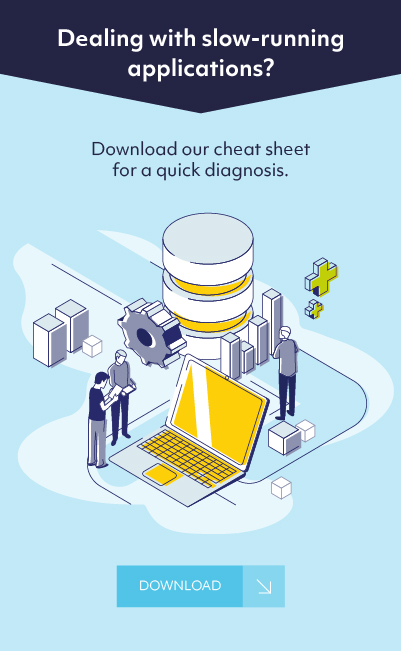While CI/CD has become the gold standard for modern software development, databases are often left behind. That gap creates risk, slows down innovation, and weakens security posture.
Integrating CI/CD pipelines into your database strategy can aid in closing that gap, allowing teams to move faster without compromising on control, compliance, or stability. In this post, we’ll break down how to approach CI/CD processes that support your database infrastructure.
Database CI/CD: No Longer Optional
While application code is pushed through automated pipelines, database changes are still often handled manually. Developers might ship an app update with schema changes tagged in a spreadsheet, waiting on someone to apply them later.
This disjointed approach introduces several problems:
- Environment drift between dev, staging, and production
- Increased risk of human error during manual changes
- Difficulty rolling back failed releases
- Inconsistent data governance and CI/CD security best practices
- Audit and compliance gaps
In short: when databases aren’t included in your continuous integration management strategy, your whole pipeline is more fragile.
For DevOps to be efficient and scalable, it must become part of your organization’s culture, not just a passing fancy. Need help explaining the benefits to your team? Share this FAQ to start the conversation with them.
What Does CI/CD for Databases Look Like?
Applying CI/CD principles to database operations means treating database code like application code. A robust CI/CD solution for databases includes:
- Version-controlled migrations (e.g., using tools like Liquibase, Flyway, or Visual Studio Database Projects with DACPAC files).
- Automated testing of schema and data changes before production
- Deployment pipelines that apply changes incrementally and safely
- Rollback procedures in case a migration fails
- Integration with secrets management and CI/CD security protocols
This ensures every schema change is tested, logged, and aligned with your broader release schedule.
Best Practices for Database CI/CD Integration
To effectively incorporate databases into your DevOps execution, consider these best practices:
- Use Migrations, Not Diffs: Rely on explicit, versioned migrations instead of state-based diff tools. This gives you predictable, auditable changes that can be tested and repeated across environments.
- Test Everything in CI: Schema changes should pass the same rigorous checks as application code, including unit tests, integration tests, and regression scenarios, before hitting staging or production.
- Automate Database Provisioning: Provision fresh, isolated databases for every test cycle. This removes hidden dependencies and ensures tests run against a consistent baseline.
- Enforce Static Analysis & Linting: Linting tools help identify risky or non-performant queries early in the CI/CD process, reducing post-deploy fire drills.
- Collaborate Early and Often: Don’t silo your database strategy. Bring DBAs into pipeline planning to align schema versioning, security, and rollback logic with your broader engineering goals.
The Benefits of Continuous Integration for Databases
Adopting CI/CD pipelines for database strategy helps teams deliver safer, faster, more scalable releases. Key benefits of continuous integration include:
- Reduced downtime: Catch breaking changes before they reach production.
- Faster deployments: Ship application and database changes in sync.
- Improved auditability: Track who changed what, when, and why.
- Enhanced collaboration: Break down silos between dev, ops, and DBA teams.
- Increased developer confidence: Know your changes are tested and safe
For organizations navigating growth, complexity, or compliance mandates, the business case is clear: automated, versioned database changes aren’t just a nice-to-have. They’re essential.
CI/CD Security Best Practices
Database pipelines are often overlooked when it comes to security measures. Especially when you’re moving fast, you can’t afford to skip this layer of protection.
Some CI/CD security best practices include:
- Use environment-specific secrets management, never hardcoded credentials.
- Enforce least privilege access to database environments and migration tools.
- Audit and log all schema and data changes.
- Integrate vulnerability scanning tools for stored procedures or user-defined functions.
- Automate access revocation as part of the CI/CD lifecycle.
Security should be a native part of your CI/CD solutions, not an afterthought.
How Managed Database Services Can Help
Many engineering teams want to implement best-in-class database automation but don’t have deep DBA resources in-house. That’s where a managed service provider like Solvaria can help.
From designing compliant, high-availability pipeline integrations to handling version control, rollback logic, and disaster recovery alignment, the right partner ensures your database strategy scales as fast as your codebase.
You don’t need to trade control for speed, a well-architected CI/CD approach gives you both. Read more about how our team can support your automations.
What this Means for Your Database
It’s no longer enough to automate the front half of your release pipeline. Databases are a critical part of the application stack and deserve the same level of rigor, automation, and observability.
By aligning your database workflows with modern CI/CD processes, you can gain speed without sacrificing safety. You reduce deployment risk, improve collaboration, and lay the groundwork for future growth in your organization.
If your current release strategy feels like a patchwork of tools and tribal knowledge, it may be time to rethink how your database fits into the big picture, and whether your CI/CD stack is working for your team or holding you back.
